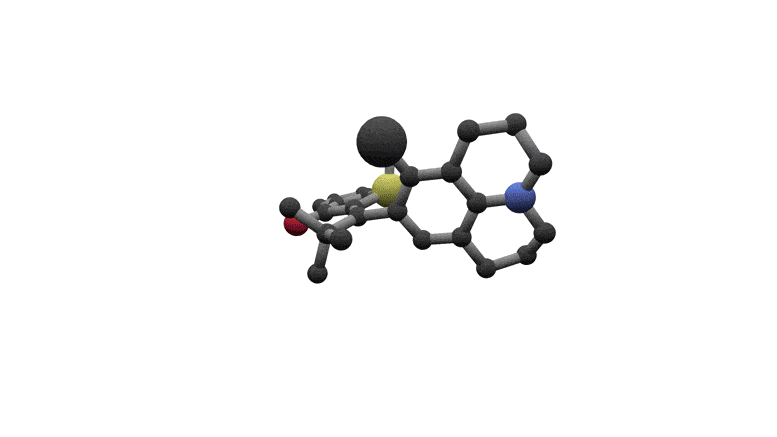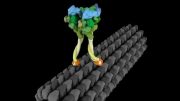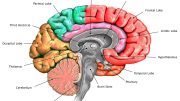
A new molecular motor enables an eight-shaped movement. Credit: H. Dube/LMU
Chemical engineers at Ludwig-Maximilians-Universität (LMU) in Munich, Germany, have developed the first molecular motor that enables an eight-shaped movement.
Molecular motors convert externally supplied energy into directional motions and are thus an important basis for future applications in nanotechnology. The first such motors were developed in the late 1990s, and since then a growing number of different systems have been established. A specialist in this field is the LMU chemist Dr. Henry Dube, who has now achieved an important breakthrough with his doctoral student Aaron Gerwien: As reported by the scientists in the journal Nature Communications, they have succeeded in developing a molecular motor that can carry out a previously unattainably complex movement on an eight-shaped path.
All molecular motors developed by Dube are based on the same class of molecules, so-called hemithioindigo dyes, which the scientists chemically modified. The movement occurs when the motors rotate in different ways around chemical bonds within the molecule. “All known molecular motors to date, however, were only able to move linearly or rotate in circles,” says Dube. The scientists discovered the new motor when they inserted a so-called julolidine group to improve the switching properties of their motors. “By way of experiment, we then discovered that the structural modifications lead to this completely new movement,” says Dube. “Probably because julolidine is a very strong electron donor.”
Altogether, the eight-shaped movement of the new motor proceeds in four steps alternating between light driven and thermally driven bond rotations. In this context, the thermal steps induce a so-called hula-twist rotation, which causes a structural change that prevents reverse movement. Another advantage of the new motor is that the light-driven steps can be induced by green light, for example by irradiation using green LEDs. Green light is much less energy rich than UV or blue light, which is used to power most existing motors. Green light, therefore, has a less harmful influence on the environment of the motor than the light of higher energy, which could, for example, break down chemical bonds. The scientists are convinced that their new motor system will significantly expand the possibilities of molecular machines and open up entirely new applications for nanotechnology.
Reference: “Green light powered molecular state motor enabling eight-shaped unidirectional rotation” by Aaron Gerwien, Peter Mayer and Henry Dube, 1 October 2019, Nature Communications.
DOI: 10.1038/s41467-019-12463-4









Be the first to comment on "Molecular Motor Breakthrough: Complex Movement on an Eight-Shaped Path"